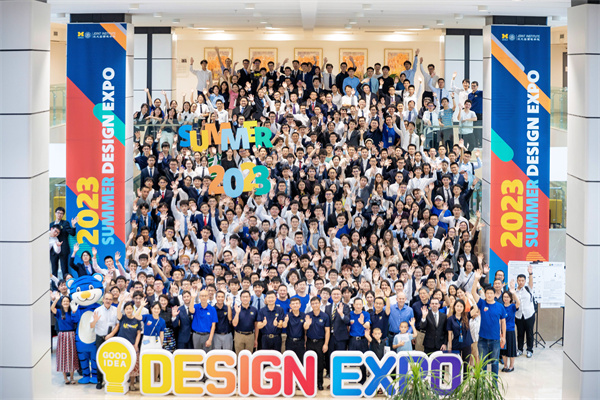
The University of Michigan- Shanghai Jiao Tong University Joint Institute (UM-SJTU JI,JI hereafter) students showcased their innovative prowess at the JI 2023 Summer Design Expo held on August 2. With over 90 student projects on display, the expo covered various engineering courses including “Introduction to Engineering,” “Design and Manufacturing 3,” “System Design and Implementation,” “Computer Architecture,” and “Product Design and Manufacturing.” The exhibited projects featured a wide range of practical and cutting-edge solutions, from easy solar charging for electric vehicles to precise drones for sky exploration and self-heating cotton shoes for cold winters. This semi-annual design expo serves as a comprehensive display of JI students’ remarkable innovations.
Scientific and innovative: freshmen explore boundless possibilities of technology
From their boundless imaginations about the starry sky to contemplations on daily life and the well-being of people, as well as further discussions on the relationship between future technology and humanity, JI freshmen demonstrate limitless imagination and creativity.
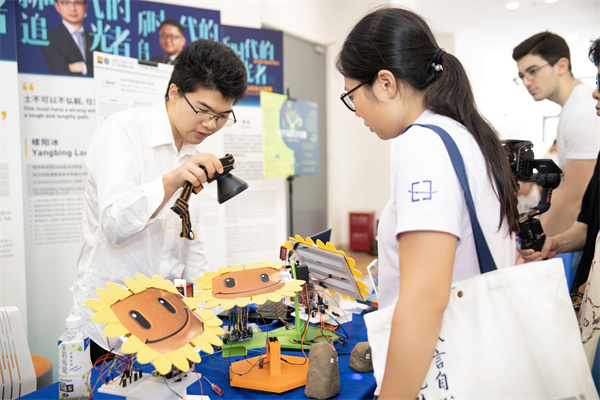
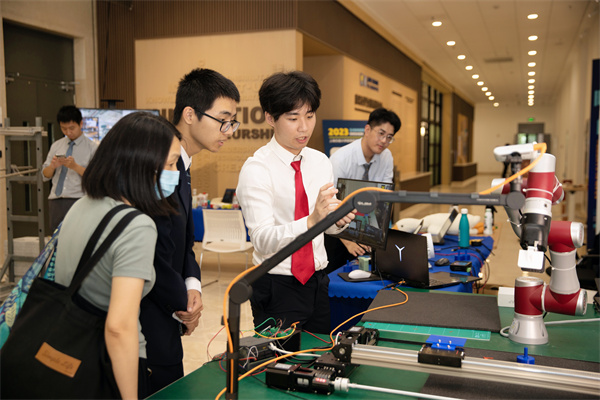
Mars Exploration Series
The vast and enchanting night sky holds humanity’s most primal and intense curiosity and passion. Facing the boundless expanse of stars above, our gaze has never ceased for a moment. The exploration of the cosmos not only satisfies our thirst for knowledge but also drives numerous crucial technological breakthroughs. From the “Chang’e” lunar missions to the “Tianwen” Mars expedition—spanning from the Moon to Mars—humanity’s curiosity and exploration of the cosmos know no bounds.
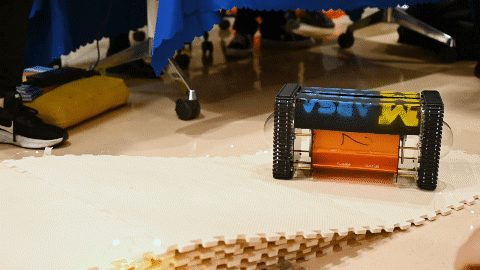
This year, JI freshmen have exhibited a remarkable surge of enthusiasm and curiosity towards Mars exploration. During the initial stages of Martian exploration, the primary tasks involved surveying the terrain and collecting resources. Given the highly intricate climate conditions and frequent changes in Martian topography, potential hazardous regions could be present. Consequently, astronauts require an urgent and real-time information system that can continuously update the Martian surface conditions. However, adopting a satellite coverage approach, similar to that on Earth, proves to be economically impractical. As a potential solution, the Martian topography detection system, designed by JI students, emerges as a promising alternative. This system relies on a Mars rover equipped with a flexible combination of communication systems and user interfaces. Utilizing the rover, real-time monitoring of Martian terrain becomes achievable, and the gathered information is then transmitted back to the user interface, potentially addressing the issue of frequent terrain changes caused by dust storms on Mars.
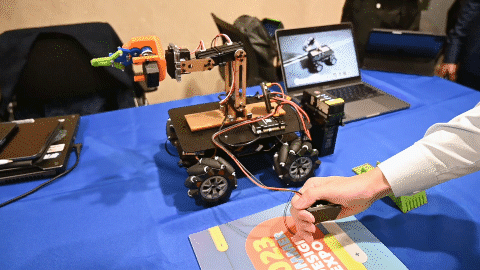
In the pursuit of exploring the unknown, encountering unforeseeable dangers is inevitable. To tackle this challenge, another JI student group has devised a Mars rover equipped with a remote-controllable mechanical arm, enabling astronauts to manipulate objects and excavate in unpredictable environments from a distance. The rover is outfitted with versatile controllers and an array of mechanical arm attachments, empowering it to perform a wide range of activities safely and without constraints.

To facilitate future astronauts in navigating and exploring the intricate and rugged Martian terrain with greater effectiveness, JI students have developed an exceptionally stable toolbox. This versatile toolbox is designed to adapt to the complex Martian surface environment, equipped with classification storage functions, and capable of swift movement through simple remote control. By significantly minimizing the consumption of precious human resources on Mars, it ensures highly efficient space work for the astronauts.
Buffered Safety Helmet
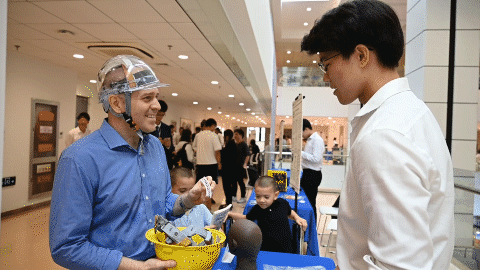
The global construction industry, which employs over 100 million people, places significant importance on ensuring the safety of its workers. Helmets have long been a crucial safety measure, safeguarding the lives of construction workers. However, since their inception over a century ago, there have been limited advancements in improving this essential safety gear. To address this issue and enhance the safety of construction workers, JI freshmen have taken the initiative to develop an innovative safety helmet. This improved helmet incorporates lightweight 3D-printed honeycomb structures as shock-absorbing devices, effectively reducing impact forces while maintaining optimal comfort for the wearer. Moreover, this solution proves to be cost-efficient, making it a viable and practical enhancement to construction worker safety.
The design is based on the classic theory of progressive failure and incorporates two devices: the stitching cushion and the honeycomb structure cushion. The plan involves stitching basic cushion structures onto each strip of the helmet liner. When impacted, these structures break in the initial stage, slowing down the force of impact. Once the stitching cushion ruptures, the suspension straps elongate, causing the head to come into contact with the HoneyFuses, the honeycomb structure cushion located at the top of the safety helmet. Inspired by beehives found in nature, this device is also used in buildings as earthquake dampers, effectively reducing the impact force.
Self-heating Warm Cotton Shoes

Peda Heat, a warm cotton shoe designed by JI students is expected to make people stay cozy this winter. This innovative shoe can generate electricity through energy conversion, providing a solution for cold feet during winter. The design focuses on addressing the needs of China’s large and aging population, aiming to improve people’s well-being in the winter season.
The Peda Heat has two main components: the energy conversion system and the functional implementation system. Using it is easy and convenient, as it requires no manual charging. The energy conversion system utilizes the pressure changes generated by the elderly’s footsteps during walking to produce stable and clean electrical energy. This power is then supplied to the functional implementation system, which efficiently converts it into thermal energy to warm the insoles and keep feet comfortably heated.
Game “Cataclysm” Focusing on Technoethics
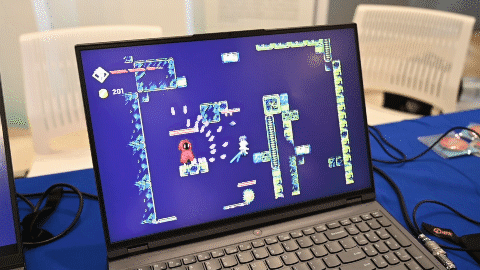
As technology continues to advance rapidly, it raises questions about whether it conceals greater crises while improving human life. Alongside technological breakthroughs and applications, ethical issues and challenges emerge. Addressing this, JI students have developed a special game called “Cataclysm.” The game’s background story revolves around an eccentric scientist whose creativity and passion drive technological progress, inadvertently causing chaos in the world. This prompts us to ponder the balance between innovation and ethics in technological development.
In “Cataclysm,” players gain abilities by defeating enemies, but this raises ethical considerations. The game’s design philosophy aims to integrate these ethical dilemmas into both the game’s background and gameplay. By presenting players with moral choices and weighing the pros and cons within the game, it encourages contemplation and awareness of ethical issues during technological advancement. Moreover, the game features randomly generated maps and unforeseen ability acquisition mechanisms, creating adventures filled with unknowns and surprises. Players must adapt to various situations and make wise decisions to save humanity in a world engulfed in cataclysms. The game serves as a thought-provoking experience, encouraging players to engage with the ethical dimensions of technological development.
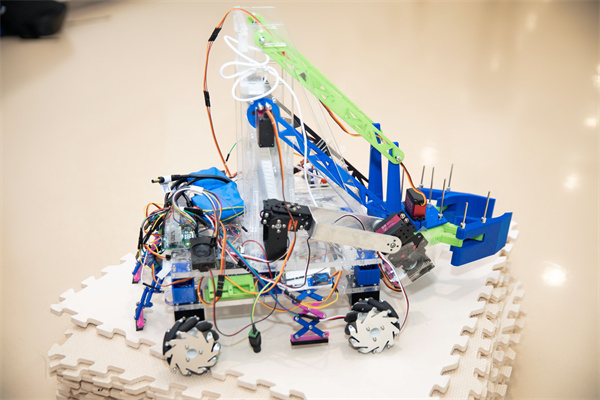
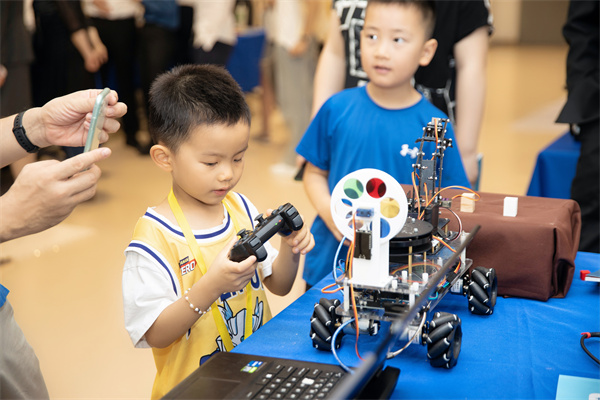
These innovative science and technology projects all originate from the JI course “Introduction to Engineering” aiming to nurture freshmen students’ interest in engineering and enhance their problem-solving abilities. The course incorporates real-life case studies, including “China’s Engineering Miracles,” focusing on significant national and era development directions such as “new energy,” “Mars mission,” and “smart living.” These case studies inspire students’ passion for the profession and instill in them a sense of pride, responsibility, mission, and patriotism as future engineers and technology professionals.
To foster proactive learning, the course features various engaging activities like competition days, seminars, open days, design exhibitions. Additionally, students receive guidance on technology communication and writing from an English writing teacher, equipping them with essential writing skills for engineers. Many JI graduates hold fond memories of this course, as it leaves a lasting and impactful impression on their academic journey.
Smart and sustainable: senior student projects create new living
How can technology be better harnessed to serve human development and social progress? After four years of thoughtful consideration and exploration, the JI senior students have found their answers through their Capstone graduation design projects. These projects showcase innovative solutions aimed at creating a more convenient and improved life for everyone.
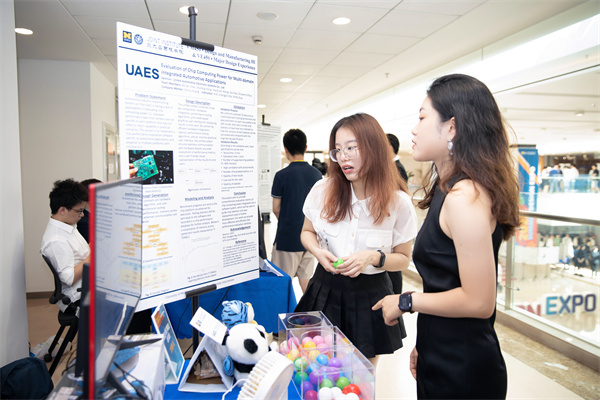
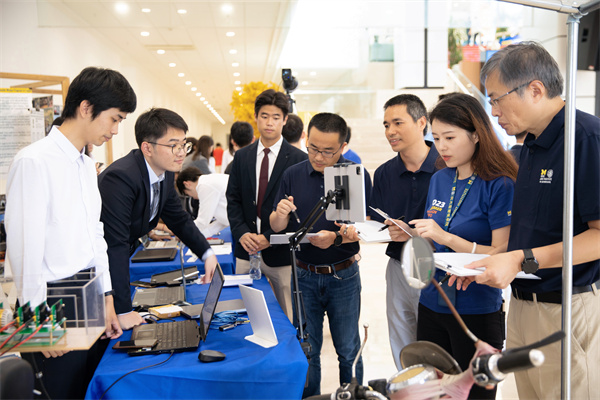
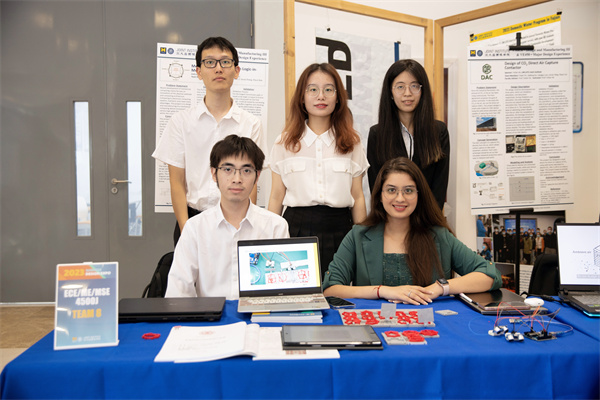
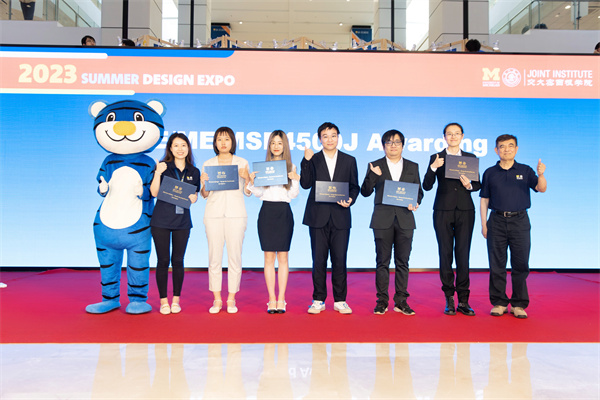
 Electric bicycles, electric-assisted bikes, and other small electric transportation vehicles offer eco-friendly and convenient options for daily commuting. However, a common frustration faced by users is the lack of available charging stations or difficulties in charging their electric vehicles. Limited distribution of charging stations due to factors like size and power grid supply contributes to this challenge. To address this issue and provide a more widespread and environmentally friendly service, JI senior students have designed a small, fully solar-powered electric vehicle charging station.
Electric bicycles, electric-assisted bikes, and other small electric transportation vehicles offer eco-friendly and convenient options for daily commuting. However, a common frustration faced by users is the lack of available charging stations or difficulties in charging their electric vehicles. Limited distribution of charging stations due to factors like size and power grid supply contributes to this challenge. To address this issue and provide a more widespread and environmentally friendly service, JI senior students have designed a small, fully solar-powered electric vehicle charging station.
The team has employed highly integrated and efficient energy flow control circuits along with intelligent energy management algorithms. These features enable efficient energy flow control between solar energy, storage batteries, and the vehicles being charged. The compact and off-grid solar charging station can be easily deployed in various locations. As the number of charging stations increases, they can be interconnected and share data, enhancing user convenience by recommending optimal choices for charging. This innovation not only promotes the use of electric vehicles but also contributes to a greener and more accessible transportation network.
Capturing CO2 to Facilitate Carbon Neutrality

Achieving carbon peak and carbon neutrality is a significant challenge in China’s ecological civilization construction. To realize these goals, reducing carbon dioxide emissions alone is not enough; existing carbon dioxide from the atmosphere must also be removed and recovered. Traditional CO2 capture projects are installed after the flue gas system of large factories, capturing CO2 from higher concentration flue gas. However, JI students have developed a prototype concept validation device to directly capture carbon dioxide from ambient air. The challenge lies in the extremely low CO2 concentration in the air, making the selection of adsorbents crucial for direct air capture (DAC). To achieve recyclability, the device performs simultaneous adsorption and desorption using solid adsorbents instead of liquids, reducing costs and potential risks.
The system consists of two parts: adsorption and desorption. The adsorption box contains a birdcage structure with honeycomb slices coated in adsorbents. Two fans blow air into the device, and the adsorbent captures carbon dioxide from the air. After reaching equilibrium, the birdcage structure is manually transferred to the desorption box, where temperature and pressure release the captured carbon dioxide for further processing and utilization. This model considers the practical application conditions of large factories and aligns with future prospects. The hope is to provide valuable references for the large-scale application of DAC, contributing to China’s efforts in carbon neutrality.
Creating More Agile Drones

Drones have become increasingly vital in various industries, ranging from agriculture and construction to public safety. To further improve their capabilities, JI senior students have designed a dynamic binary neural network accelerator. This image recognition system enables drones to identify objects more sensitively and make informed analyses using advanced algorithms and machine learning techniques.
The primary focus of this accelerator is achieving image classification on low-power embedded devices with limited memory capacity. Traditional convolutional neural networks used for image recognition present challenges due to their memory-intensive nature. To address this, the project is developed based on FPGA (Field Programmable Gate Array), which efficiently manages limited power and memory resources by using binarized weights and input activations. With this project, drones’ image recognition accuracy is significantly enhanced while keeping them lightweight and agile, facilitating better performance across various applications.
Industry, academia, and research: deep integration sparks student vitality
The JI summer expo has been featuring graduation design projects sponsored by various domestic and international companies, adding to its success. This year, 12 projects received sponsorship from industry-leading companies such as Bosch, Intel, Rockwell, Unitech, Ambarella, and Hikvision. Several of these sponsors are alumni enterprises, such as Pathfinder. The exhibited projects address topics closely related to everyday life, originating from real-world technical projects in the industry.
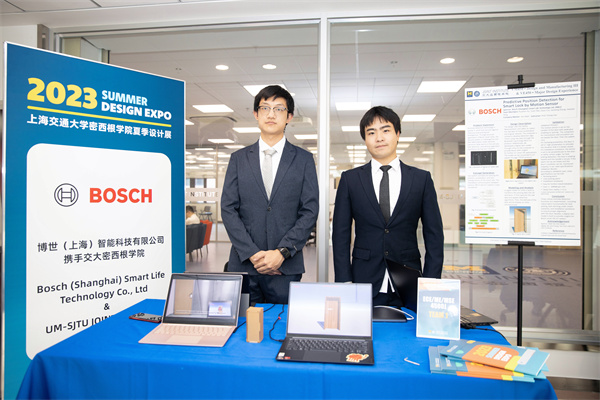
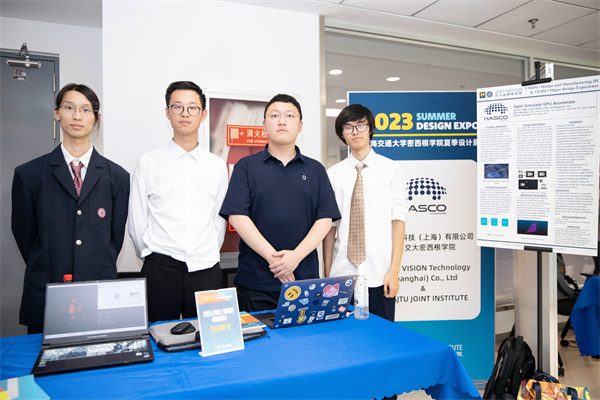
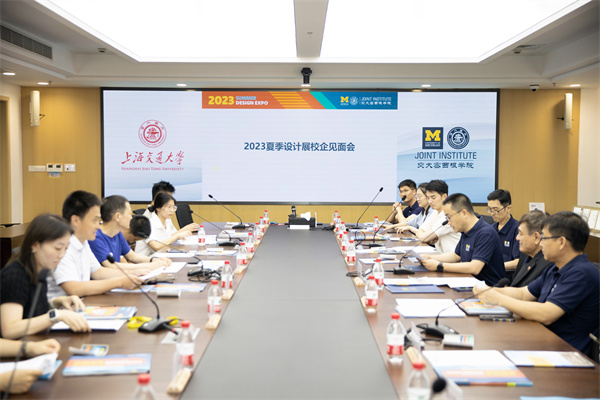
The JI graduation design projects have always emphasized the integration of industry, academia, and research. Since 2010, more and more enterprises have been providing and sponsoring “customized” projects aligned with their product’s market development direction. The proportion of collaborative graduation projects between JI and enterprises has been increasing, enhancing the effectiveness of engineering practical teaching through synergistic collaboration of university and industry resources. The design expo employs various effective methods like course introductions, visual displays, and dual mentorship with companies to stimulate students’ creative thinking from multiple perspectives. It offers a diverse platform for talent cultivation and corporate cooperation by the institute.
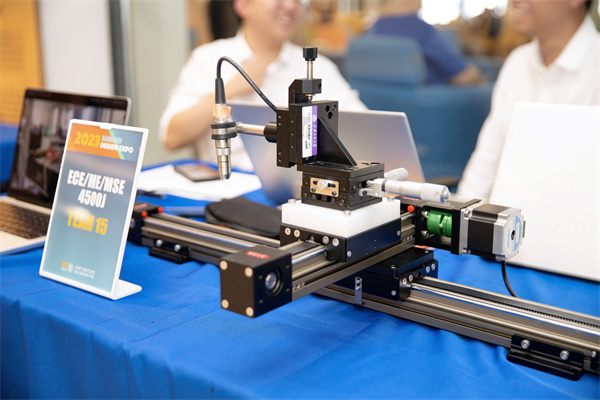
JI has prioritized the development of undergraduate students’ research capabilities by establishing dedicated undergraduate research courses. These courses offer valuable opportunities for students to collaborate with professors on research projects, equipping them with essential skills for their future academic careers in their chosen engineering fields.
In April this year, the JI Tang Junyuan Student Innovation and Entrepreneurship Center was officially opened. The center aims to foster industry-education integration, strengthen university-enterprise cooperation, and encourage students’ involvement in scientific and technological innovation projects. It provides a collaborative space for students to validate innovative ideas and boost their entrepreneurial spirit. Equipped with advanced facilities, including 3D printing, machining, electronic circuitry, testing, VR & AR, and software development areas, the center offers a diverse platform for discussions, training, and coding. It remains bustling with energetic students, actively participating in creative projects and engaging in enthusiastic discussions day and night. This innovative hub reflects the vibrant spirit of the JI students, propelling the pursuit of knowledge and entrepreneurship.





